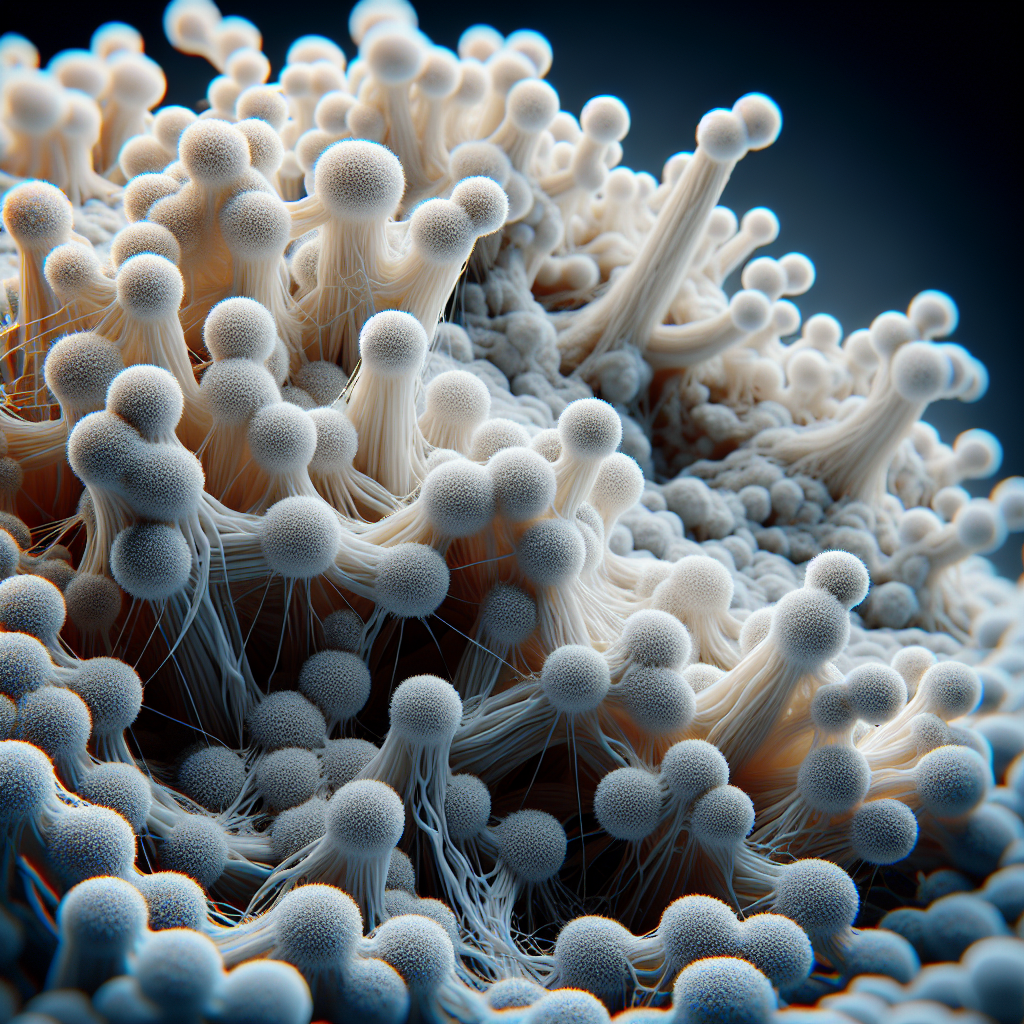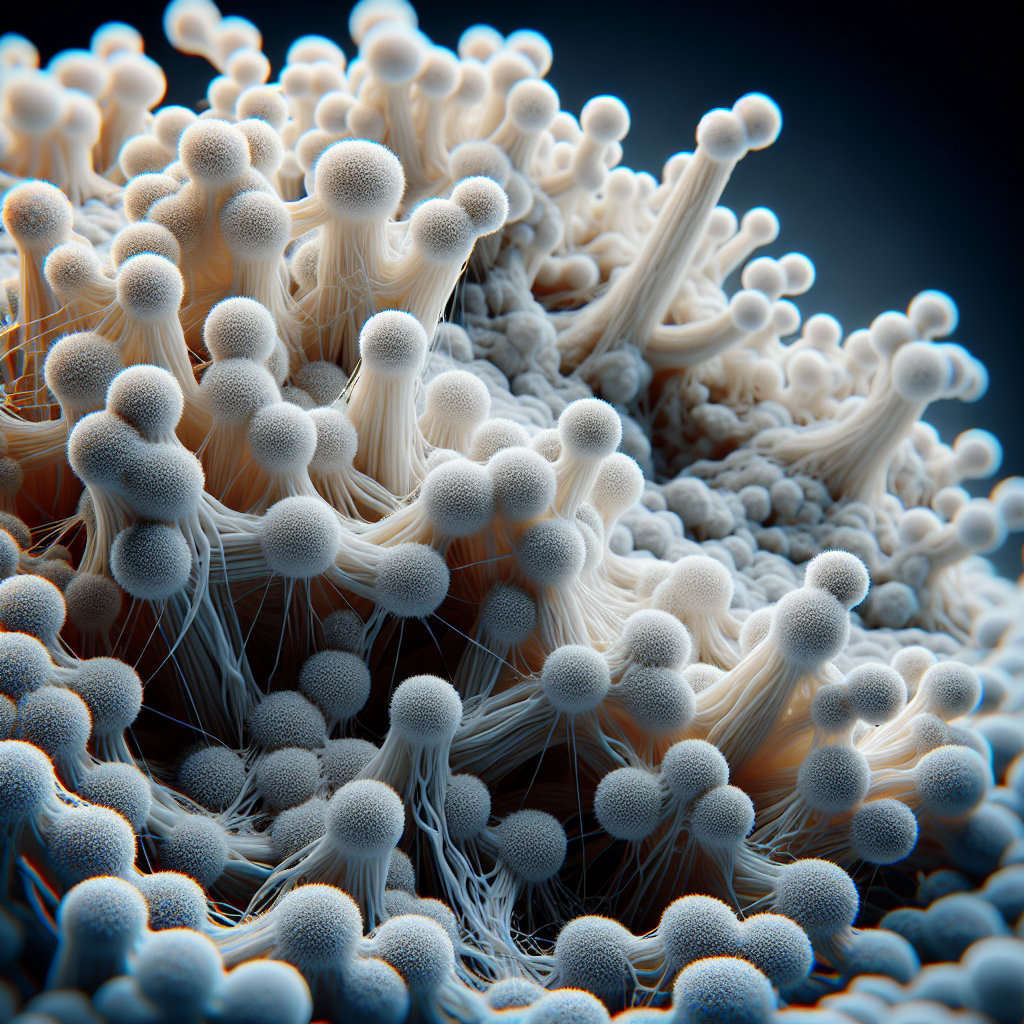In “Understanding the Growth and Development of Yeast Mycelium”, you’ll be taken on an intriguing journey through the microscopic world of yeast mycelium. This article provides a comprehensive yet easily digestible exploration of yeast mycelium’s biological structure, its growth phases, and the pivotal role it plays in the ecosystem. Regarded as a cornerstone in the science of microbiology, your comprehension of yeast mycelium will be elevated, deepening your knowledge in this vital area of study.

Definition of Yeast Mycelium
Yeast Mycelium is typically a term used to describe the growth state of yeast, a single-celled, eukaryotic organism, in which it forms a network of filamentous structures called mycelia. To fully comprehend what yeast mycelium is, it’s necessary to understand the concepts of yeast and mycelium individually.
What is a Yeast?
Yeast is a type of fungal organism that has long been known to humankind due to its multitude of uses, most notably in baking and brewing. It is, in essence, a unicellular microorganism classified in the kingdom Fungi. Over 1,500 species of yeast have been identified, among which Saccharomyces cerevisiae and Candida species are commonly researched in scientific terms due to their growth behavior and economic significance.
Understanding Mycelium
Mycelium, in the simplest terms, is the vegetative part of a fungus or fungal-like bacterial colony. It involves a network of fine thread-like structures known as hyphae. Each mycelium unit is a living entity connected through a web of these hyphae, which helps in nutrient absorption and distribution.
Yeast Mycelium: An Overview
The term yeast mycelium refers to the network of filamentous fungal hyphae formed when certain species of yeast, such as Candida albicans, shift from their regular unicellular form (budding yeast) to a filamentous growth form. This mold-like, multi-cellular, filamentous form is known as the mycelial or hyphal form.
The Life Cycle of Yeast Mycelium
Understanding the life cycle of yeast mycelium is crucial to apprehend how these organisms grow, divide, and propagate, as well as how environmental factors influence their life cycle.
The Different Phases of Growth in Yeast
In general, yeast growth transpires in a series of stages: the lag phase, the log or exponential phase, stationary phase, and death phase. Each stage has unique characteristics and involves different cellular and metabolic changes.
Metabolic Changes During Growth
During the various phases of growth, yeast undergoes several metabolic changes. These include changes in the levels of certain metabolic enzymes and alteration in the metabolic pathways to adapt to the changing environmental conditions.
End of the Life Cycle
At the end of the life cycle, yeast mycelium can either return to a unicellular form or remain as a mycelium, depending on environmental conditions.
Growth Conditions of Yeast Mycelium
The environment in which a yeast species grows can greatly impact its form, behavior, and survival.
Physical Environment Factors
Various physical factors, such as humidity, light, and pressure, significantly affect yeast mycelium growth. Since mycelium requires a high level of humidity, its growth is often restricted to moist areas.
The Influence of Temperature
Temperature is yet another crucial parameter that can influence yeast mycelium growth. The optimal temperature for yeast growth is usually around 30-37 degrees Celsius, but the precise range may vary among different species.
Role of pH
pH level plays a pivotal role in yeast vitality as it impacts various physiological functions. Most yeast species prefer slightly acidic to neutral pH levels for optimal growth.
Mycelium Formation in Yeast
In light of certain environmental and physiological signals, yeasts may shift from a single-cellular form to mycelial form.
Yeast Cells and Hyphal Cells
When yeast undergo a morphological switch, the single-celled yeast form turns into the multi-cellular hyphal form. This transformation involves complex cell-cell communication and signal transduction mechanisms.
Factors Influencing Mycelium Formation
Various environmental factors such as pH, temperature, oxygen, and nutrient availability play a major role in influencing mycelium formation in yeast. In addition to these, several physiological factors like cellular stress, genetic factors also contribute significantly to the mycelial growth.
The Process of Hyphal Formation
Yeast mycelium undergoes a complex growth procedure, including cell elongation and formation of new hyphal tips, maintained by orchestration of multiple regulatory networks.

The Genetics of Yeast Mycelium
The transition from yeast to mycelium form isn’t merely a physical transformation but it is predominantly controlled at a genetic level.
Genetic Control of Mycelium Growth
The yeast to mycelium transition of growth is regulated by a complex network of genetic elements that respond to environmental conditions. Modulation in the expression of various genes influences the morphology and virulence of these organisms.
Role of Genetic Material in Development
The genetic material of yeast, mainly in the form of DNA, plays a vital function in the development and growth of mycelium. Changes in the genetic material can induce significant alterations in yeast mycelium morphology, behavior, and overall life cycle.
Importance and Applications of Yeast Mycelium
Yeast mycelium has profound importance in many industrial and medical applications due to its unique properties and capabilities.
Yeast Mycelium in Brewing
In brewing, yeast mycelium plays a crucial role in fermenting sugars into alcohol. This process is achieved using the yeast Saccharomyces cerevisiae, which can efficiently convert glucose to ethanol and carbon dioxide under anaerobic conditions.
Medical and Pharmaceutical Uses
The medical field has recognized the worth of yeast mycelium. It’s a source of various significant pharmaceutical products, including antibiotics, vaccines, hormones, and enzymes.
Agricultural Applications
In agriculture, yeast mycelium can be used as a natural pesticide or as a soil conditioner improving soil fertility and plant health.
The Microbiology of Yeast Mycelium
The microbiology of yeast mycelium encompasses the study of their microscopic structure, growth adaptations, and their interaction with their environment.
The Microscopic Structure
Under the microscope, yeast mycelium appears as a network of interconnecting hyphae. Each hypha is a tubular structure containing the cytoplasm and the cellular organelles.
Adaptations for growth
To thrive in various environments, yeast mycelium has developed a variety of adaptations. These include the capacity to switch between yeast and mycelial forms and the ability to grow under different environmental conditions.
Microbial Interaction with Environment
The yeast mycelium interacts with its environment in several ways, such as through the absorption of nutrients, response to environmental changes, and interaction with other organisms present in the same habitat.
Latest Research on Yeast Mycelium
Research on yeast mycelium offers countless possibilities for developments in different fields from understanding human diseases to crafting sustainable solutions.
Advances in Genomic Research
Genomic research on yeast mycelium helps to better understand the genetic control of mycelium growth. This knowledge can guide strategies toward enhancing the production of useful mycelium-based products.
Innovative Techniques in Growth Monitoring
New methods and technologies are being developed to monitor the growth and development of yeast mycelium more effectively. This monitoring can garner crucial insights into the precise requirements for optimized mycelium growth.
Developments in Industrial Applications
Researchers are exploring ways to use yeast mycelium in a wide array of industrial applications. It’s been eyed as an environmentally friendly alternative to traditional synthetic materials, opening doors for biodegradable and sustainable solutions.
Challenges in Cultivating Yeast Mycelium
Despite the potential benefits of yeast mycelium, there are numerous challenges affiliated with its cultivation.
Environmental Challenges
Environmental stress, such as variation in temperature or pH, can pose substantial challenges to the growth and survival of yeast mycelium.
Genetic Instability and Mutation
Genetic instability and mutation are fundamental challenges in cultivation. Alterations in the genetic material can impact productivity, growth form, and eventually the survival of yeast mycelium.
Issues with Industrial Scaling
Scaling up the production of yeast mycelium effectively, while maintaining its quality, is another considerable challenge in industrial production.
Yeast Mycelium and Human Health
The interaction between yeast mycelium and human health is an area of growing research interest, given the beneficial and adverse impacts it can have.
Impact on Gut Microbiome
Research indicates that yeast mycelium may positively affect the human gut microbiome. It potentially boosts beneficial microbial populations and contributes to the overall wellness of the GI tract.
Potential Risks and Allergies
However, at the same time, some species of yeast mycelium could pose risks, such as allergic reactions or infections in immunocompromised individuals.
Role in Disease Research
Yeast mycelium, particularly of the species Candida albicans, is used as a model organism to better understand human diseases. Studying the genetic and cellular mechanisms in its growth can provide valuable insights into human cell biology and disease processes.
In conclusion, understanding yeast mycelium’s ins and outs can lead to impactful advancements across diverse fields ranging from industry to medicine and research. Its potential exists, but so do challenges. Therefore, it remains a dynamic field of study and development.
